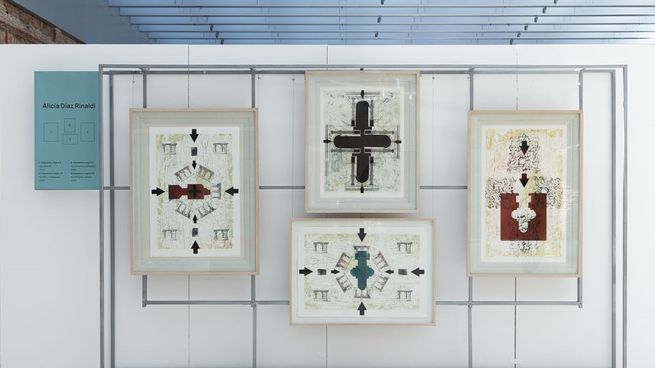The artist Alicia Díaz Rinaldi inaugurated her exhibition “Memory and Fragments”, in which her works come into contact with those of the historic architect Francisco Tamburini.
The Casa Rosada Museum presents “Memory and fragments”a dialogue between the works of the outstanding artist Alicia Diaz Rinaldi and Francisco Tamburiniauthor of the west façade of the Government House
The content you want to access is exclusive to subscribers.
Born in Italy in 1848 and died in Buenos Aires in 1891, Tamburini He arrived in Argentina in 1884 hired by the Argentine State during the presidency of Rock. Among his works are, in addition to the aforementioned west façade of the Casa Rosada, the Teatro del Libertador General San Martín (Córdoba), known as Rivera Indarte, and the Teatro Colón in Buenos Aires. He was also the author of primary and secondary schools, hospital buildings, nursing homes, and military establishments.


Alicia Diaz Rinaldian unavoidable figure in Argentine graphics, began in 1965 with the great recorder Delia Cugat. Founder of Group 6 next to Olga Billoir, Mabel Eli, Zulema Maza, Matilde Marínemerged around 1984, innovative artists who produced a great change in this discipline.
He studied in Rio de Janeiro, where he came into contact with important artistic figures, among them, Mira Schendel. She introduced collagraph in our country, she held countless individual and group exhibitions, her works are in national and foreign museums. Multi-awarded, she received, among others, the Grand Prize of Honor of the National Hall (1989), Konex Prize (1992), Trabucco Prize (2010).
Among his works are the series related to the historical memory of Buenos Aires through architecture, as is the case of the present exhibition. It was his knowledge with Irma Arestizábal (1940-2009), art historian, curator, expert in Latin American art, who in 1990 explored the original plans of Tamburini when he directed the Casa Rosada Museum, which put Diaz Rinaldi in contact with them and which gave rise to this series of twelve works and what is in display cases, which the artist has just generously donated to the Museum.
An impeccable assembly, in that catacomb environment, on the original plans of the Taylor Customs and the Buenos Aires Fort, a video is shown with explanations by the artist, display cases with gouges and other tools of the discipline of engraving, works related to the original plans but with their own imprint, which also, inspired by the Encyclopedia of Denis Diderot Published between 1751 and 1772, it includes elements such as crabs, mites, alligators, drawings related to that which is alive and that evoke memory. Other works in etching, collagraph, relief printing confirm, once again, the excellence of his creative work.
A temporary exhibition not to be missed in this torrid summer, which can be visited along with “A country project” (1862-1880), Mitre, Sarmiento, Avellanedafirst stage of the museographic renovation project focused on the “historical presidencies” developed in the aforementioned period. The choice of this period in which the presence of a national executive power is recognized that leads the social and political organization of the country in a context of instability, armed conflicts in a territory not yet properly delimited. It should be remembered that here you also find “Plastic Exercise” of the great Mexican muralist David Alfaro Siqueiros painted in 1933 together with Berni, Spilimbergo, Castagnino and Lazarus.
(Av. Paseo Colón 100. Wednesday to Sunday from 11 a.m. to 6 p.m. Free admission. Until May.)
Source: Ambito
I am an author and journalist who has worked in the entertainment industry for over a decade. I currently work as a news editor at a major news website, and my focus is on covering the latest trends in entertainment. I also write occasional pieces for other outlets, and have authored two books about the entertainment industry.




